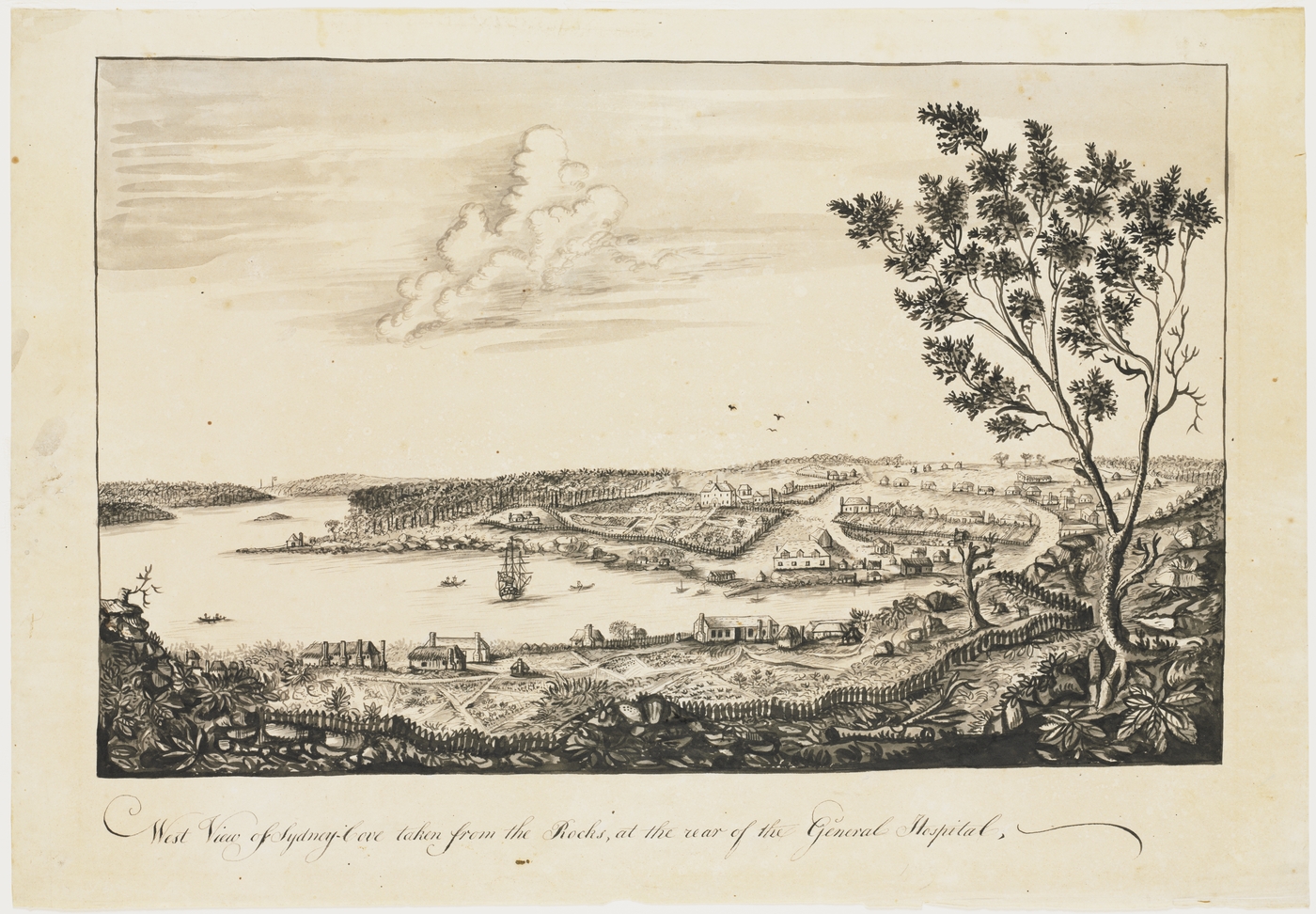The Dictionary of Sydney was archived in 2021.
West view of Sydney Cove taken from the Rocks, at the rear of the General Hospital 1793-94

From the collections of the
(Dixson Galleries)

